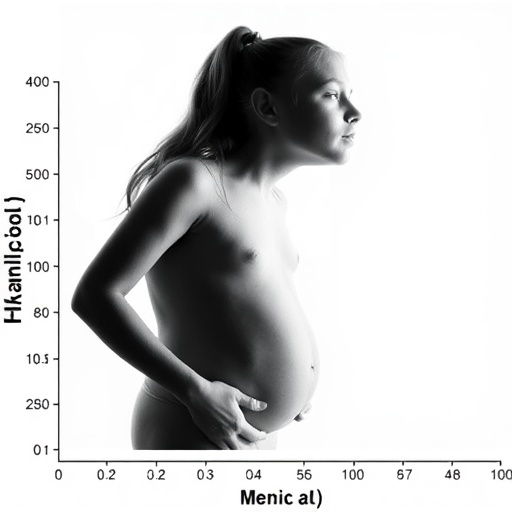Imbalanced network function is associated with development of more severe depression, indicating a potential neurobiological marker for risk prediction
Philadelphia, May 30, 2019 – An imbalance of functioning in attention-related brain systems may help forecast the course of teen depression, according to a study published in Biological Psychiatry: Cognitive Neuroscience and Neuroimaging, published by Elsevier. Proper coordination of frontoinsular brain networks help us regulate our attention between external goals and self-focused or emotional thinking. But abnormalities in the coordination between these networks were not only evident in teens with more severe depression, but also, critically, predicted increased depressive symptoms two weeks later.
“The teen years are a time of remarkable growth and opportunity, as young people forge new relationships, learn how to navigate intense emotions, and make the transition to independence. However, it is also during adolescence that a high and growing number of teens experience clinical depression and related mood problems for the first time,” said first author Roselinde Kaiser, PhD, University of Colorado Boulder.
“Our challenge as clinicians, scientists, and parents, is: how do we predict which teens will experience mood problems in the near future?”.
Dr. Kaiser and colleagues tested the idea of using fMRI to predict future mood health. They measured the activity of frontoinsular networks while adolescents played a difficult computer game involving emotional images. Current prediction tools mostly use self-report, which can be unreliable in teens.
“Our results showed that adolescents who showed imbalanced coordination across brain systems–that is, lower coordination among areas involved in goal-directed attention, and higher coordination among areas involved in self-focused thought–went on to report bigger increases in depression two weeks later, bigger mood swings, and higher intensity of negative mood in daily life,” said Dr. Kaiser.
Network functioning provided a better prediction of future mood health beyond current symptoms–a critical distinction, the authors wrote, as it suggests that frontoinsular network functioning could predict who might develop more severe depression between two teens with the same current symptoms.
“This very interesting study highlights the important role that frontoinsular circuits, measured using fMRI during the processing of emotional stimuli, may play in regulating our mood, and how impairment in the function of this network may underlie present and ongoing negative mood states,” said Cameron Carter, MD, Editor of Biological Psychiatry: Cognitive Neuroscience and Neuroimaging.
Although the study assessed mood health at only two weeks later, the findings indicate that frontoinsular network functioning may be useful to predict future mood health in teens. If confirmed in longer clinical studies, the findings suggest that this measure could provide a neurobiological risk predictor to help guide interventions to prevent severe depression.
###
Notes for editors
The article is “Frontoinsular Network Markers of Current and Future Adolescent Mood Health,” by Roselinde H. Kaiser, Elena Peterson, Min Su Kang, Julie Van Der Feen, Blaise Aguirre, Rachel Clegg, Franziska Goer, Erika C. Esposito, Randy P. Auerbach, and Diego A. Pizzagalli (https:/
Copies of this paper are available to credentialed journalists upon request; please contact Rhiannon Bugno at [email protected] or +1 214 648 0880. Journalists wishing to interview the authors may contact Roselinde Kaiser, PhD, at [email protected].
The authors’ affiliations and disclosures of financial and conflicts of interests are available in the article.
Cameron S. Carter, MD, is Professor of Psychiatry and Psychology and Director of the Center for Neuroscience at the University of California, Davis. His disclosures of financial and conflicts of interests are available here.
About Biological Psychiatry: Cognitive Neuroscience and Neuroimaging
Biological Psychiatry: Cognitive Neuroscience and Neuroimaging is an official journal of the Society of Biological Psychiatry, whose purpose is to promote excellence in scientific research and education in fields that investigate the nature, causes, mechanisms and treatments of disorders of thought, emotion, or behavior. In accord with this mission, this peer-reviewed, rapid-publication, international journal focuses on studies using the tools and constructs of cognitive neuroscience, including the full range of non-invasive neuroimaging and human extra- and intracranial physiological recording methodologies. It publishes both basic and clinical studies, including those that incorporate genetic data, pharmacological challenges, and computational modeling approaches. http://www.
About Elsevier
Elsevier is a global information analytics business that helps scientists and clinicians to find new answers, reshape human knowledge, and tackle the most urgent human crises. For 140 years, we have partnered with the research world to curate and verify scientific knowledge. Today, we’re committed to bringing that rigor to a new generation of platforms. Elsevier provides digital solutions and tools in the areas of strategic research management, R&D performance, clinical decision support, and professional education; including ScienceDirect, Scopus, SciVal, ClinicalKey and Sherpath. Elsevier publishes over 2,500 digitized journals, including The Lancet and Cell, 39,000 e-book titles and many iconic reference works, including Gray’s Anatomy. Elsevier is part of RELX Group, a global provider of information and analytics for professionals and business customers across industries. http://www.
Media contact
Rhiannon Bugno, Editorial Office
Biological Psychiatry: Cognitive Neuroscience and Neuroimaging
+1 214 648 0880
[email protected]
Media Contact
Rhiannon Bugno
[email protected]
Related Journal Article
https:/
http://dx.




